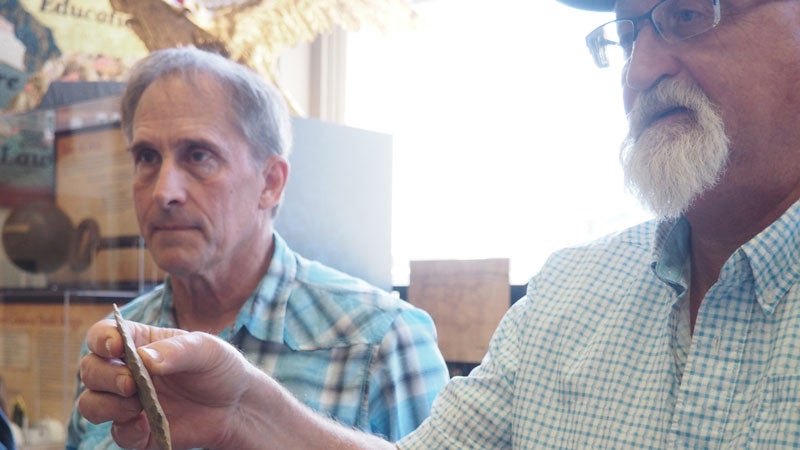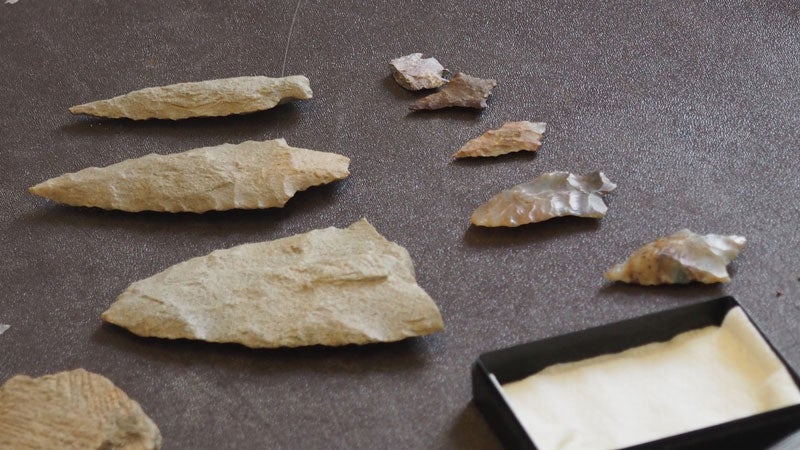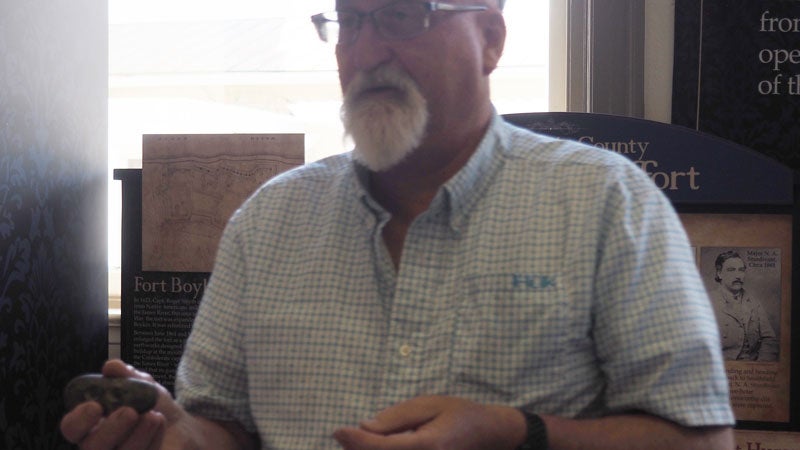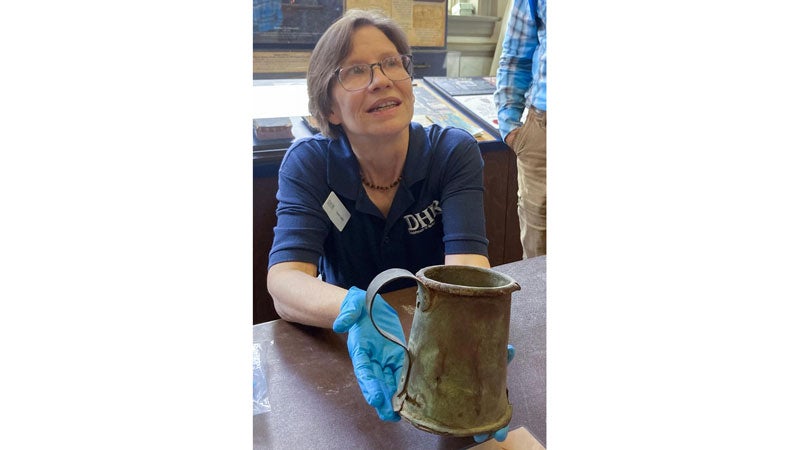‘What’s this:’ Museum workshop attempts to identify locally-found artifacts
Published 4:22 pm Thursday, August 24, 2023
When Wayne Gunter was 10 years old, an oval-shaped stone with two holes drilled into it washed out of his grandmother’s driveway on the Eastern Shore.
After holding onto it for decades, he now knows what it is.
A trio of state government archeologists visited the Isle of Wight County Museum on Aug. 23 for a workshop titled “What’s This?”
Laura Galke, chief curator of the Virginia Department of Historic Resources and a specialist in Virginia’s colonial period, joined Department of Historic Resources Eastern Regional archeologist Mike Clem and Chris Egghart, a Virginia Department of Environmental Quality expert in stone tool manufacturing during Virginia’s pre-European contact eras, from 3-7 p.m. in an effort to identify items brought in by the public.
The three told Gunter his stone was likely a piece of Native American jewelry – possibly up to 3,500 years old.
He wasn’t the only museum visitor to have found centuries-old or even thousand-year-old artifacts hiding in plain sight or just beneath the surface of the ground.
A farmer from Isle of Wight County’s Moonlight community showed pottery fragments the archeologists identified as Native American, and dated to between 200 B.C. and A.D. 200.
Chris and Kendall Perry, a Newport News couple, found what Galke identified as a “rattail” spoon while metal detecting near an old house in Surry County. The lead alloy spoon design, Galke said, was popular during the 1700s.
The shape of the spoon’s bowl, Galke said, is consistent with an English diet, as French spoons of the era were smaller.
Shawn Landis of Virginia Beach brought in a miniature 18th or 19th century pistol he’d purchased at an auction, which prompted a debate between the archeologists as to whether the gun was a nonfunctioning child’s toy or a formerly functioning firearm that had somehow lost its trigger.
This was the museum’s first time hosting the “What’s This?” workshop, though, according to Museum Director Jennifer England, it may become a recurring event if deemed popular enough.
“We were so pleased with the event as were our VDHR and VDEQ experts, and it was fun for everyone to learn more about these objects and Isle of Wight County history,” England said.
Other artifacts were identified as a 1700s tankard, a likely Civil War-era spent bullet and a late 19th or early 20th century brick from a pile someone found discarded in the woods.
Egghart and Clem speculated the discarded bricks may have been from a load fired on-site, or possibly were from a structure that burned down.
Another attendee brought in tobacco pipe stems.
“Known as Bookbinder pipes, these fragments had the decorative markings attributed to a single individual who lived in Virginia Beach who may have trained as a pipe maker in Britain or the Netherlands,” England said.













